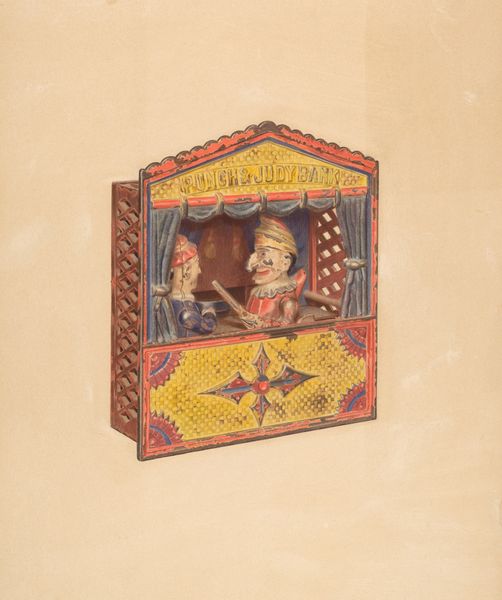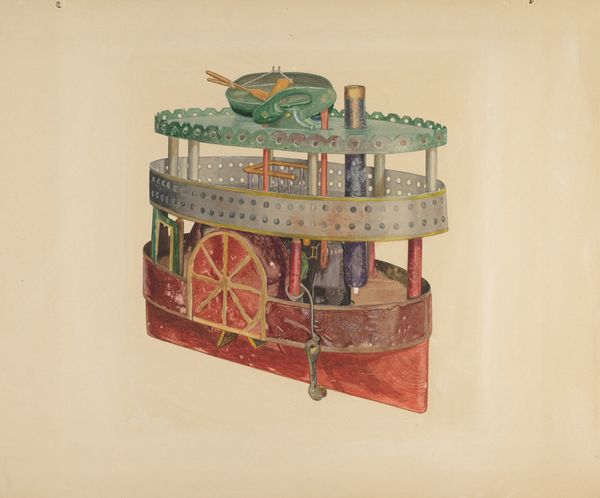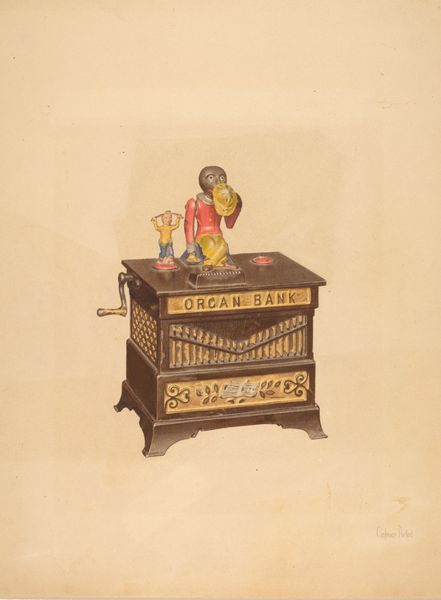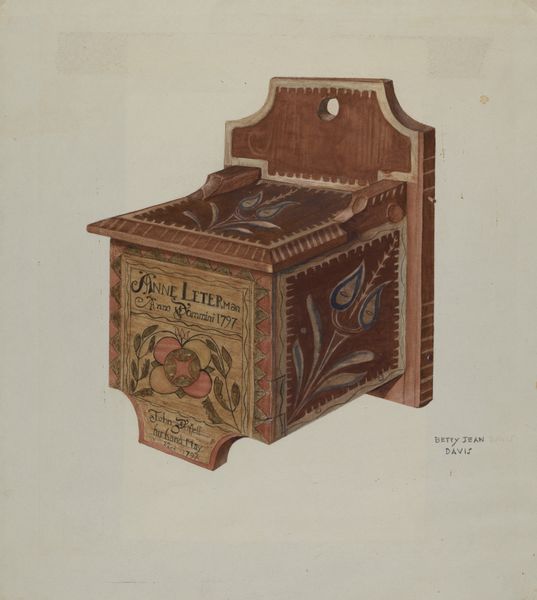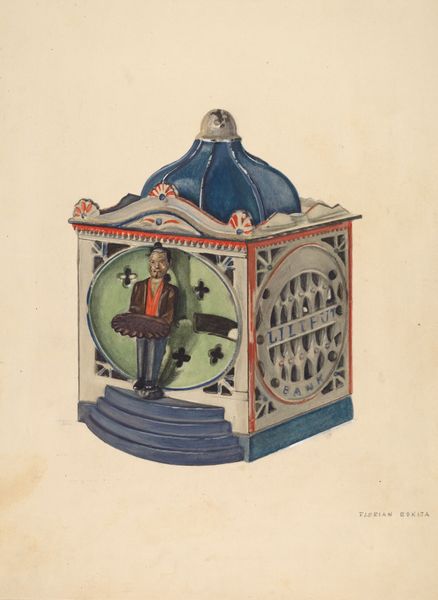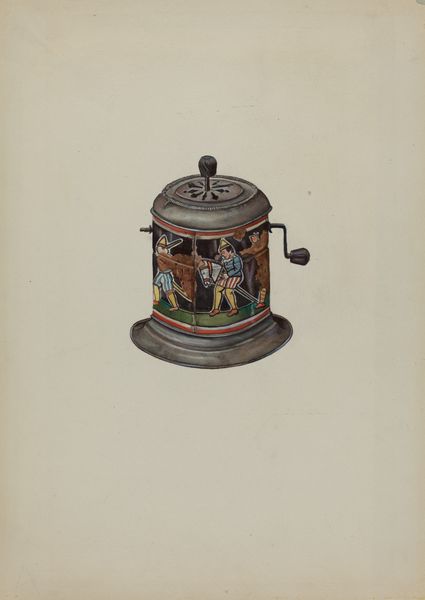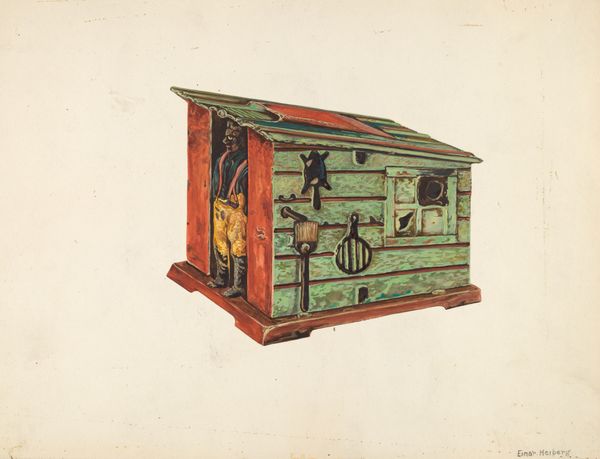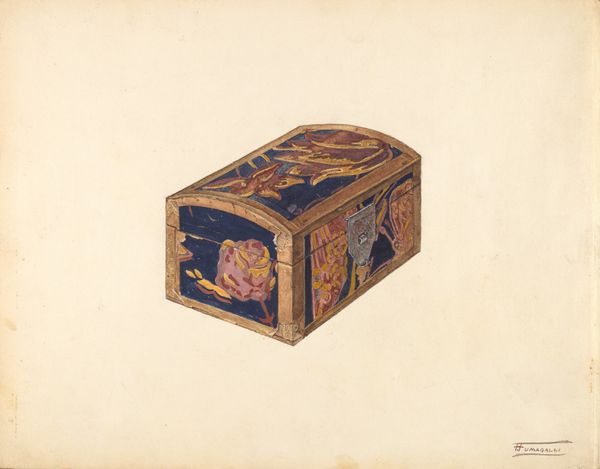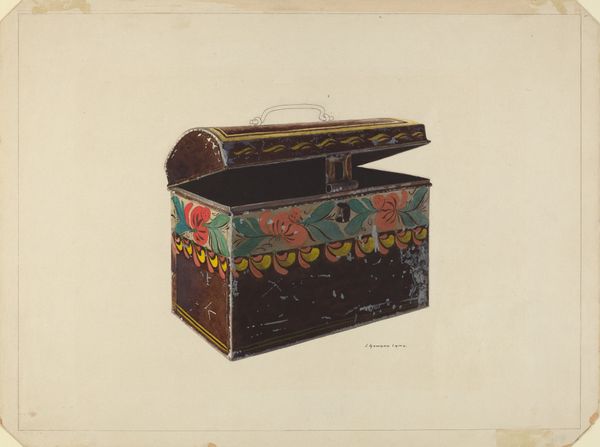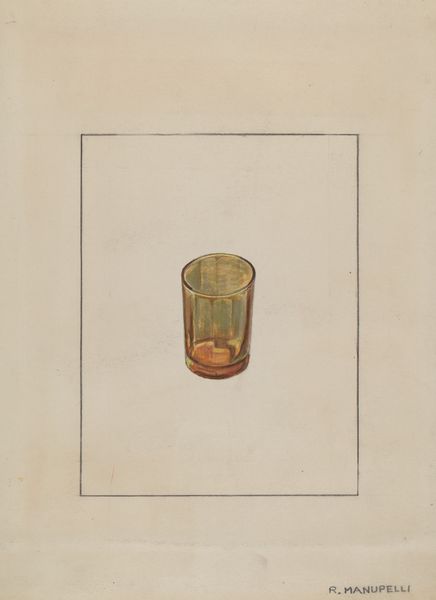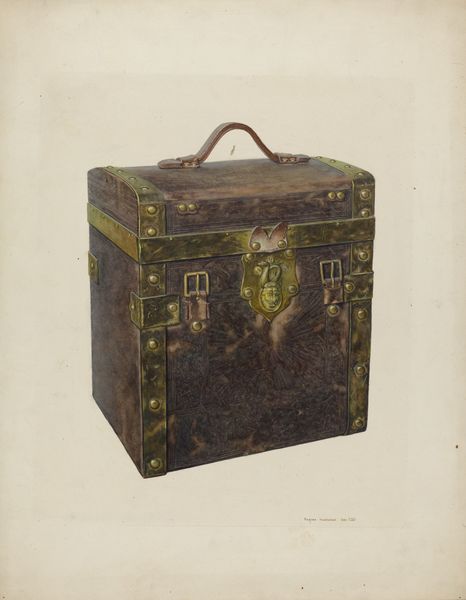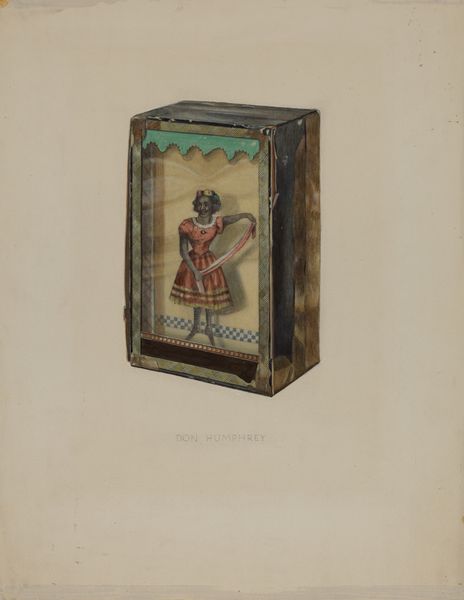
drawing, coloured-pencil, watercolor
#
drawing
#
coloured-pencil
#
watercolor
#
coloured pencil
#
watercolour illustration
#
genre-painting
#
miniature
Dimensions: overall: 41 x 30.6 cm (16 1/8 x 12 1/16 in.) Original IAD Object: 7 1/2" high; 6 1/2" wide; 2 1/2" deep
Copyright: National Gallery of Art: CC0 1.0
Editor: Here we have Dorothea Bates’ "Mechanical Bank: Punch and Judy" from around 1941, rendered with colored pencil and watercolor. It has such a whimsical and almost folksy feel to it. What can you tell me about the materiality and context of this work? Curator: I see here a meticulous rendering, not of some grand historical scene, but of a manufactured object – a child's toy bank. We need to consider the artist's choice to represent a mass-produced item with traditional art materials like watercolor and colored pencil. What does it mean to elevate a commodity in this way? Editor: That's fascinating! I hadn't considered the commodity aspect. Are you saying that the choice of medium challenges the preciousness typically associated with art? Curator: Precisely. Look at the textures she creates with the colored pencil; they mimic the surfaces of manufactured tin or painted metal. She’s drawing attention to the production process of both the bank itself, and to her own artistic labour in rendering it. What statement might Bates be making about consumer culture and artistic value? Editor: I guess it makes me question the boundaries between what we consider fine art and everyday objects, like toys and, well, money-banks! And by focusing on the visual depiction of labor, it almost makes it about that human element, which makes a bank quite powerful in its messaging. Curator: Yes. It pushes us to contemplate the material realities behind even seemingly innocuous objects, and the systems of production that underpin our consumer society. Editor: That makes me see this piece in a whole new light. Thank you for opening my eyes to the commentary embedded in its materials and subject! Curator: And thank you for posing such thoughtful questions. Considering art from a materialist perspective always adds fascinating layers of interpretation.
Comments
No comments
Be the first to comment and join the conversation on the ultimate creative platform.
